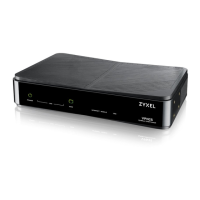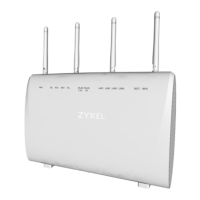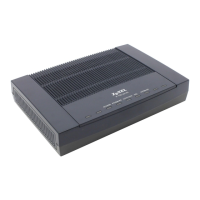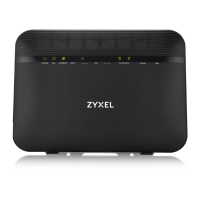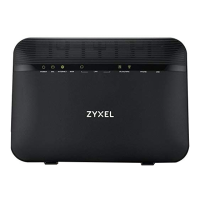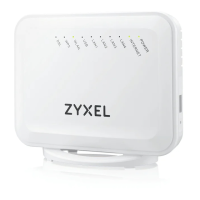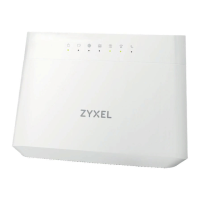VES1724-56 User’s Guide 274
CHAPTER 28
CFM
This chapter explains the Connectivity Fault Management (CFM) screens.
28.1 CFM Overview
The route between a CO VDSL switch and one of its CPE may go through switches owned by
independent organizations. A connectivity fault point generally takes time to discover and impacts
subscribers’ network access. In order to eliminate the management and maintenance efforts, IEEE
802.1ag is a Connectivity Fault Management (CFM) specification which allows network
administrators to identify and manage connection faults. Through discovery and verification of the
path, CFM can detect, analyze and isolate connectivity faults in bridged LANs.
The figure shown below is an example of a connection fault between switches on the LAN. CFM can
be used to identify and management this kind of connection problem.
Figure 166 Management for any Fault in Bridges
28.1.1 How CFM Works
To enable CFM, pro-active Connectivity Check Messages (CCMs) between two CFM-aware devices in
the same MD (Maintenance Domain) network. An MA (Maintenance Association) defines a VLAN and
associated ports on the device under an MD level. In this MA, a port can be an MEP (Maintenance
End Point) port or an MIP (Maintenance Intermediate Point) port.
•MEP port - has the ability to send Connectivity Check Messages (CCMs) and get other MEP ports
information from neighbor switches’ CCMs within an MA.
•MIP port - forwards the CCMs, Loop Back Messages (LBMs) and Link Trace Messages (LTMs).
CFM provides two tests to discover connectivity faults.
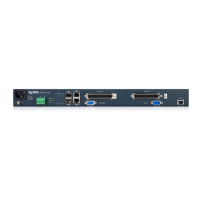
